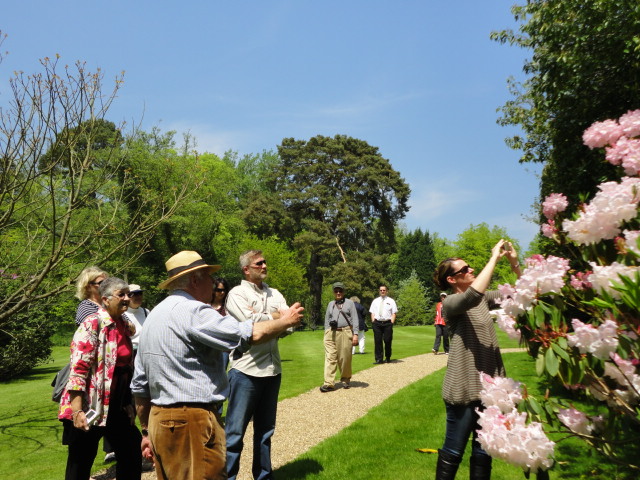Powis Castle
Built by the medieval Princes of Upper Powys and the ancestral home of the Herbert family since 1587, Powis Castle has been beautified by successive generations of Herberts and then Clives (descendants of Clive of India).
The magnificent garden at Powis is of the highest horticultural and historical importance. It was originally laid out in the 1680s based on designs by William Wynde, inspired by those of the palace at St Germain-en-Laye near Paris where the first Marquis of Powis joined James II in exile in 1689. The famous hanging terraces which rise to 450 feet, constitute the greatest surviving example of the Baroque garden in Britain. The form and disposition of the terraces was dictated by the massive outcrop of rock from which they were blasted in the years around 1680, but derives ultimately from the ancient hillside gardens of Italy.
The garden retains its original lead statues, an orangery and aviary. A statue of Hercules by the famous 18th century garden sculptor John van Nost stands against a spectacular backdrop of ancient clipped Powis yew. Lead statues by Andries Carpentière dance on the balustrades.
In the 18th century an informal woodland ‘Wilderness’ with rhododendrons was added on the opposing ridge. In 1911 the kitchen garden was transformed into a formal flower garden. In the shelter of the walls and hedges unusual and tender plants and climbers now thrive.
The garden has been looked after since 1952 by the National Trust. The planting schemes are superb. Abutilon vitifolium “Tennants Wife’, Ceanothus ‘Puget Blue’ and Rosa banksiae ‘Lutea’ are particularly beautiful in season. The castle itself houses the Clive Museum besides containing a wealth of fine furniture and paintings.

 Passionate about beautiful gardens? Experience the finest gardens on one of our small and friendly group tours.
Passionate about beautiful gardens? Experience the finest gardens on one of our small and friendly group tours.
 Ready to book?
Ready to book? 
